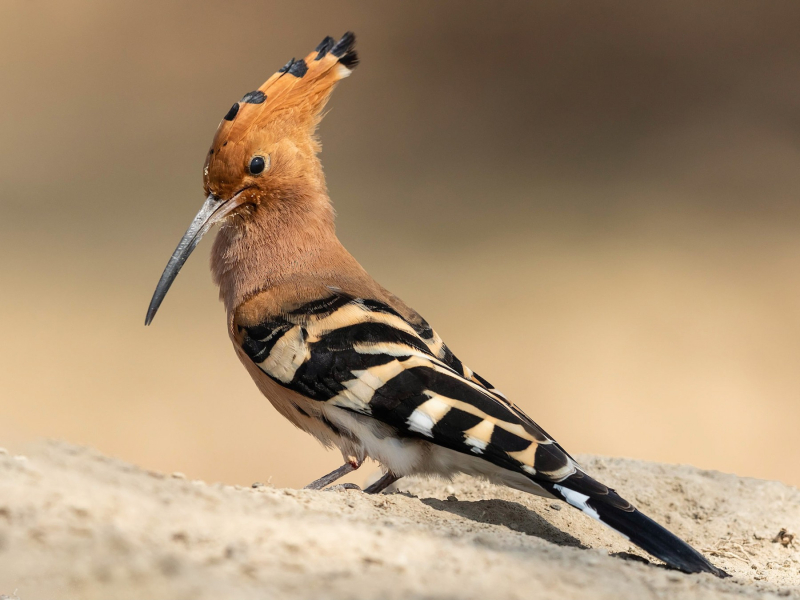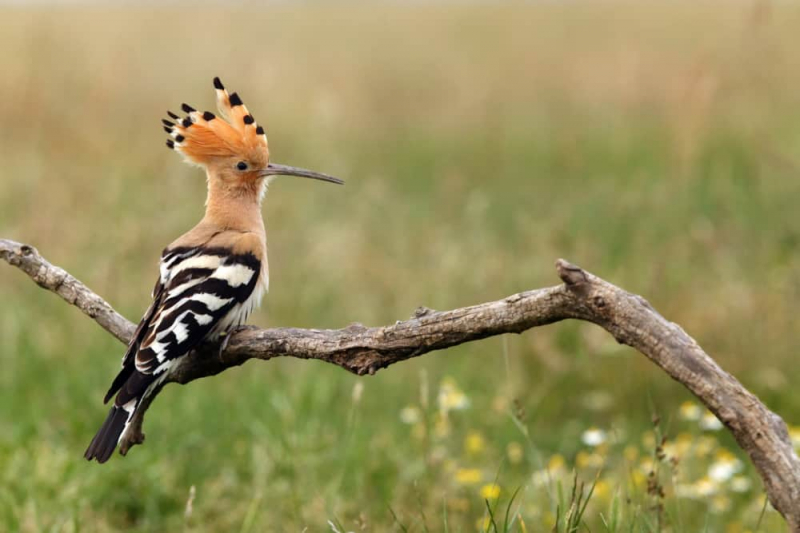Eurasian Hoopoe
The Eurasian Hoopoe (Upupa epops) is the most widespread species of the genus Upupa. It is indigenous to northern Africa, Asia, and Europe. In the northern portion of its range, it migrates. It spends the majority of its time on the ground, searching for insects and grubs. In an already-existing cavity, a clutch of seven or eight eggs is placed. The female lays the eggs, which hatch asynchronously. Hoopoes from Africa and Madagascar are regarded by some ornithologists as subspecies of the Eurasian hoopoe.
The Eurasian hoopoe is a medium-sized bird with a length of 25–32 cm and a wingspan of 44–48 cm. It measures 46-89 grams. The long, thin, tapering bill of this species, which is black with a fawn base, is very unique. When exploring inside the dirt, the bill can be opened thanks to the strengthened head muscles. The hoopoe has broad, rounded wings that can fly strongly; the northern migratory subspecies have broader wings. The hoopoe's wings partly close at the end of each beat or brief sequence of beats, giving it a distinctive undulating flight that resembles that of a large butterfly. After the breeding season, adults may start their molt and carry it out until they move for the winter.












